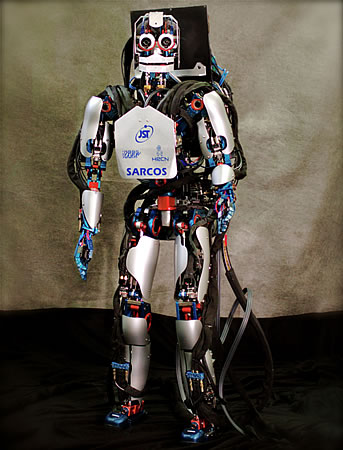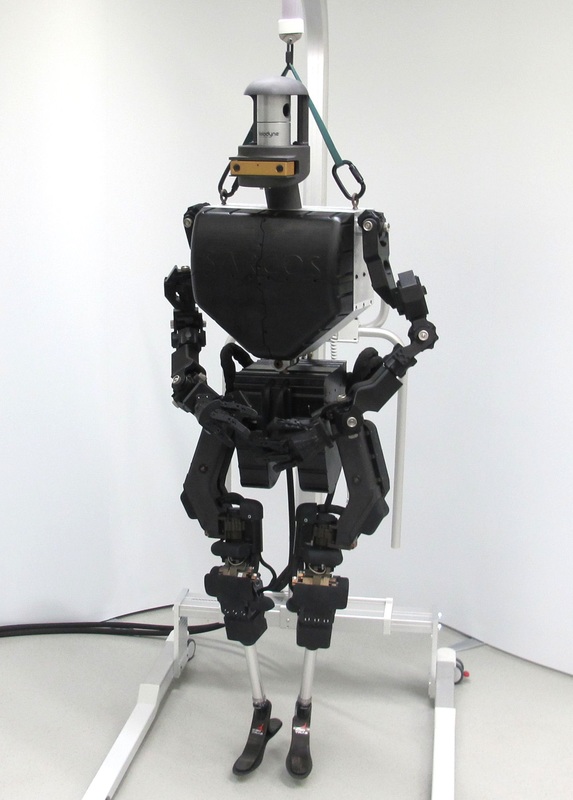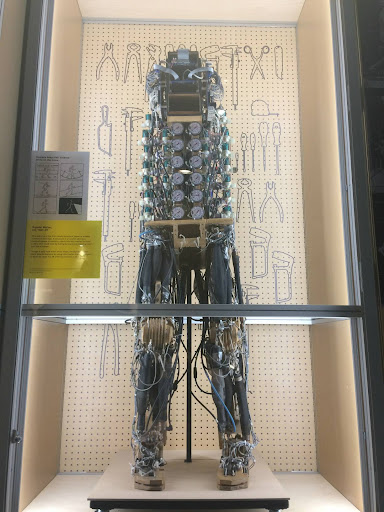Sarcos (and Shadow)

Sarcos
Sarcos was founded in 1983 and started in the prosthetic industry with the Utah Arm. Their next project, the Utah/MIT Dextrous Hand, attracted the attention of Disney. Sarcos developed hydraulic animatronic characters for Disney which featured compliant control as opposed to previous animatronics that used only position control. As of today, Sarcos has almost completely pivoted towards exoskeletons and remote manipulators based on their exoskeletons.
DB
Purchased by the Advanced Telecommunications Research Institute (ATR) in Japan, DB is a humanoid robot whose name stands for Dynamic Brain. DB is 185 cm tall with a weight of 80 kg. The robot has 30 DoF: two in each eye, three in the neck, seven in each arm, three in the torso, and three in each leg. The robot is rigidly mounted at the pelvis, so it is unable to balance or walk.
CB
Created by Sarcos in a collaboration between the National Institute of Communication Telecommunication (NiCT) and the Advanced Telecommunications Research Institute (ATR) in Japan. CB has a weight of 92 kg and a height of 157.5 cm. The robot has 50 DoF: 2 DoF per eye, 3 DoF neck, 7 DoF per leg, 7 DoF per arm, 3 DoF torso, and 6 DoF per hand. The arm has a max payload of 3 kg. The arm, leg, torso, and neck joints are all hydraulic. The fingers are pneumatic, and the eye joints are electrically actuated. The onboard 1.4 GHz Pentium-M CPU is used for force-based balancing, but any other processing is done off board on a cluster of 8 workstations. The robot has four Elmo brand cameras with 2 Shure microphones. Besides the two CB’s in Japan, Carnegie Mellon University, the University of Southern California got robots of the same model.
The Computational Brain Project, which is what CB stands for, started in 2004 and ended in 2008. The Department of Brain Robot Interface (ブレインロボットインタフェース研究室) at ATR is now continuing to use the CB robot for research.
Hermes, the Sarcos humanoid from the University of Southern California, moved to NYU in 2019 to be used by researcher Ludovic Righetti.
Athena

Created for the Max Planck Institute in Germany, Athena is the most recent humanoid built by Sarcos. The robot features passive ankles and prosthetic feet. The robot made international news in 2014 for being the first humanoid to ride as a passenger on an airplane flight, however, not much more news has been released since then. Step Timing Adjustment: A Step toward Generating Robust Gaits published at the end of 2016, shows a simulation of Athena walking.
Shadow Biped

The Shadow Robot Company, now famous for its Dexterous Robotic Hands, started working on a full sized biped robot in 1988. The biped has 12 degrees of freedom powered by 28 air muscles. In addition to each muscle having air pressure and strain sensors, each joint has optical position sensors. The robot is 168 cm tall and weighs 31 kg. By 1997, the robot was able to stand up straight and remain in the same position for more than 15 minutes. When under foot sensors were added, a new control system allowed the robot to balance even when being pushed sideways. The last update was that the robot took two steps to keep itself balanced. After this, the project was put on hold.
The robot was exhibited at Robodex 2002, however, was never put back together after coming back to the UK. Eventually the Shadow Biped Walker became a part of the Science Museum of London’s permanent collection
Note: I have included Shadow’s robot here as I often get Shadow and Sarcos confused
